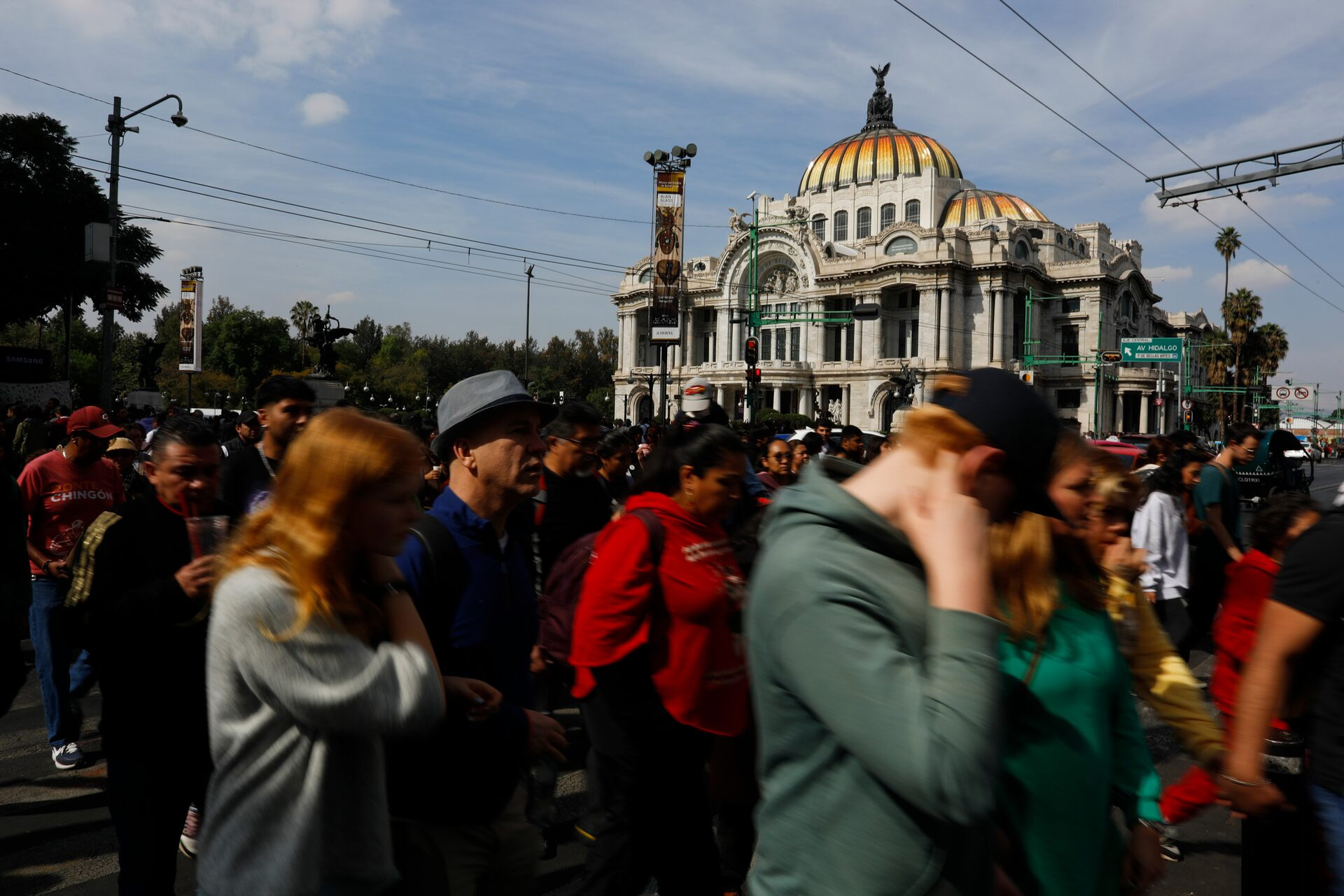I landed in Mexico City in December 2019, shortly before the COVID-19 pandemic upended life and cartel-led violence reached its bloodiest period in Mexico’s recent history. Yet traveling around the country as a senior correspondent for Reuters, I was mesmerized by the vibrancy of Mexico’s people, culture and food.

It may strike some people as unwise, or even perilous, to mount a bike to explore a megalopolis long known for street crime and snarled traffic – and where motorists do not need to pass a driving test to hit the road.
Yet in many ways it’s the best way to soak up Mexico City, a fast-changing cultural hotspot sitting on the bed of an ancient lake some 2,200 meters (7,200 ft) above sea level, in a valley ringed by mountains and lava-spewing volcanoes.
It’s also how this correspondent fell in love with the city.

Below are some pointers:
Recent revival: Mexico City now steals tourists and budding artists from the likes of New York and Berlin. Its renaissance has been dramatic and relatively recent, rising from the rubble of a catastrophic 1985 earthquake and infamy as the world’s most polluted city in the early 1990s.
More recently, a revival of the city’s historic zones, offering a glimmer of their past glories, has triggered an influx of foreigners and investment. Swanky restaurants sprouting behind the ornate facades of Art Deco buildings have made the city a North American culinary powerhouse.
Art treasures: To enjoy a taste of Mexico City on two wheels, I made a circular trip around its historic center.

After scanning a QR code, I yanked out a bike from an Ecobici terminal and circled the imposing Palacio de Bellas Artes, or Palace of Fine Arts, topped by an orange dome and featuring an elegant marble facade that blends Neoclassical and Art Nouveau architectural styles. The palace hides a wealth of artistic treasures, including Diego Riviera’s famed Controller of the Universe fresco. Featuring the face of Russian revolutionary Vladimir Lenin, the mural found a home in Belles Artes after an earlier 1932 version painted in the lobby of the Rockefeller Center in New York was deemed subversive and chiseled down from the wall.
But as I turned the corner to the palace entrance, what caught the eye wasn’t the posters for its ballet or opera performances.
A large fabric banner, fluttering in the wind across the street, spelled out “Mexico Feminicida” in blood-spattered black letters, a protest by a feminist collective that uses art to denounce the scourge of femicides that has long blighted Mexico.

Revolutionary monument: Pivoting west, I followed bike lanes toward the palm-studded Plaza de la Republica, circling the iconic 67-meter Monument to the National Revolution that commemorates the bloody armed conflicts of the 1910-1920 period that shaped modern Mexico, before gliding towards La Romita, a small square on the edge of the fast-gentrifying La Roma neighborhood.
Snack break: Plaza La Romita was a quesadilla stop on an organized bike tour I took when I was visiting Mexico City for the first time to see if it could become a future home. I remember being struck by what was oncea quintessentially Mexican scene: elderly women roasting squash blossom quesadillas next to a weather-beaten Catholic church and a tortilleria run by the same family for 70 years.

I wolfed down a quesadilla stuffed with huitlacoche, an edible corn fungus delicacy known as “Mexican truffle,” and the stall owner Rita insisted I also try the family’s homemade mole resting in a terracotta clay pot, a tinge of spiciness emanating from the savory sauce.
Digital nomads: I zig-zagged through La Roma, a trendy and culturally rich neighborhood where Michelin-star restaurants and street taco stands huddle under tree-lined avenues. The food scene is buzzy and rapidly evolving. Cariñito Tacos, a delicious hole-in-the-wall spot, serves up culinary fusion at its best.
La Roma has changed in recent years. Many Americans moved here during COVID lockdown, Macbooks in hand, to enjoy the colorful atmosphere and relative cheap prices. But often they don’t pay Mexican taxes while driving up gentrification, and locals are not happy.

Bohemian charm: On the jacaranda-lined Alvaro Obregon boulevard, the sage advice furnished by Mexican friends during lonely COVID-era walks echoed in my ears: “Always look up.”
Terraces and towers of Art Nouveau and Neoclassical buildings stand sandwiched between ugly concrete siblings erected in the second part of the last century. Not everything is pretty, but the Bohemian charm endures.
Museum park: I wended my way to Chapultepec Park, a treasure-trove of statues and museums. It was a Sunday, when tens of kilometers of the city’s thoroughfares are shut to traffic and there is a festival atmosphere: Latin music boomed, carefree cyclists zoomed past leisurely joggers, parents were teaching their children how to ride a bike.

A fenced off roundabout was plastered by posters bearing faces of some of Mexico’s more than 100,000 missing people. “They were taken alive, we want them back alive,” demand banners further up the road.
More cyclists zoomed past, a rollerblading couple kissed, music blared.
DATA POINTS
Population: 22.5 million
Great walking neighborhoods: Condesa and Roma
Oddity: Mexico City is sinking 20 inches a year
Quintessential street food: Al Pastor tacos (Drazen Jorgic/Reuters)








You must be logged in to post a comment.